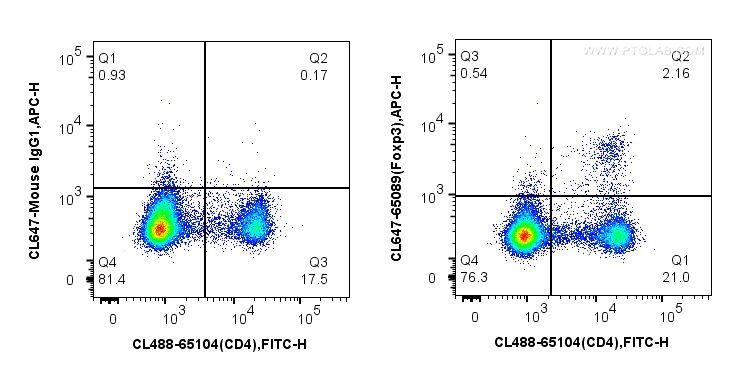- Featured Product
- KD/KO Validated
CoraLite®555-conjugated PEX5 Polyclonal antibody
PEX5 Polyclonal Antibody for
Host / Isotype
Rabbit / IgG
Reactivity
human, mouse, rat
Applications
Conjugate
CoraLite®555 Fluorescent Dye
Cat no : CL555-12545
Synonyms
Validation Data Gallery
Product Information
CL555-12545 targets PEX5 in applications and shows reactivity with human, mouse, rat samples.
| Tested Reactivity | human, mouse, rat |
| Host / Isotype | Rabbit / IgG |
| Class | Polyclonal |
| Type | Antibody |
| Immunogen | PEX5 fusion protein Ag3268 |
| Full Name | peroxisomal biogenesis factor 5 |
| Calculated Molecular Weight | 631 aa, 70 kDa |
| Observed Molecular Weight | 68-80 kDa |
| GenBank Accession Number | BC010621 |
| Gene Symbol | PEX5 |
| Gene ID (NCBI) | 5830 |
| RRID | AB_2919611 |
| Conjugate | CoraLite®555 Fluorescent Dye |
| Excitation/Emission Maxima Wavelengths | 557 nm / 570 nm |
| Form | Liquid |
| Purification Method | Antigen Affinity Purified |
| Storage Buffer | PBS with 50% Glycerol, 0.05% Proclin300, 0.5% BSA, pH 7.3. |
| Storage Conditions | Store at -20°C. Avoid exposure to light. Stable for one year after shipment. Aliquoting is unnecessary for -20oC storage. |
Background Information
The peroxisomal targeting signal type1 (PTS1) receptor, PEX5, is one member of peroxins (PEXs) which are proteins required for peroxisome assembly. PEX5 and PEX7 function as receptors that recognize PTS1- and PTS2- containing proteins, respectively, and PEX5 binds PTS1 through its C-terminal 40-kDa tetratricopeptide repeat domain. It is a predominantly cytoplasmic, partly peroxisomal protein that appears to shuttle between these compartments as it mediates the import of PTS1-containing proteins. PEX5 has been reported to interact with PEX10, PEX12, PEX13, and PEX14. Defects in PEX5 are a cause of Zellweger syndrome (ZWS), which is a lethal peroxisome biogenesis disorder. This antibody recognizes endogenous PEX5, which migrates with an apparent molecular mass of 80 kDa (PMID: 7790377).



